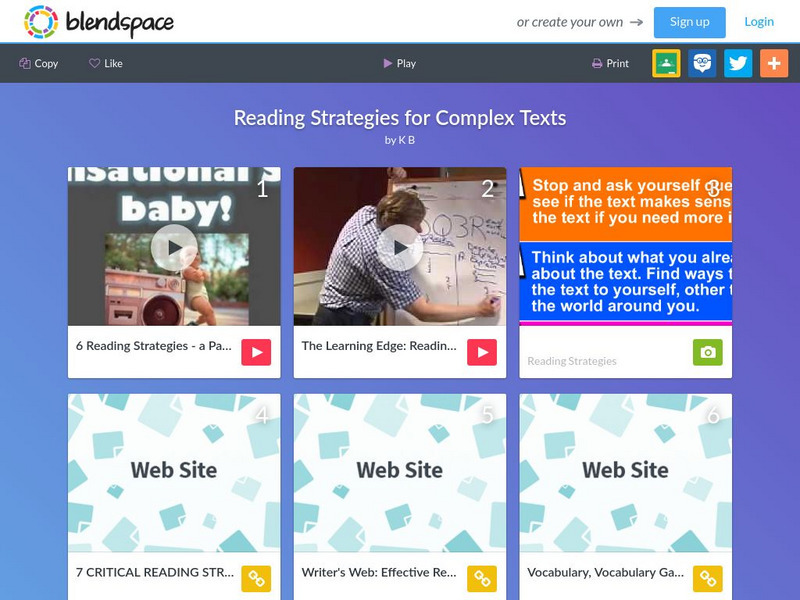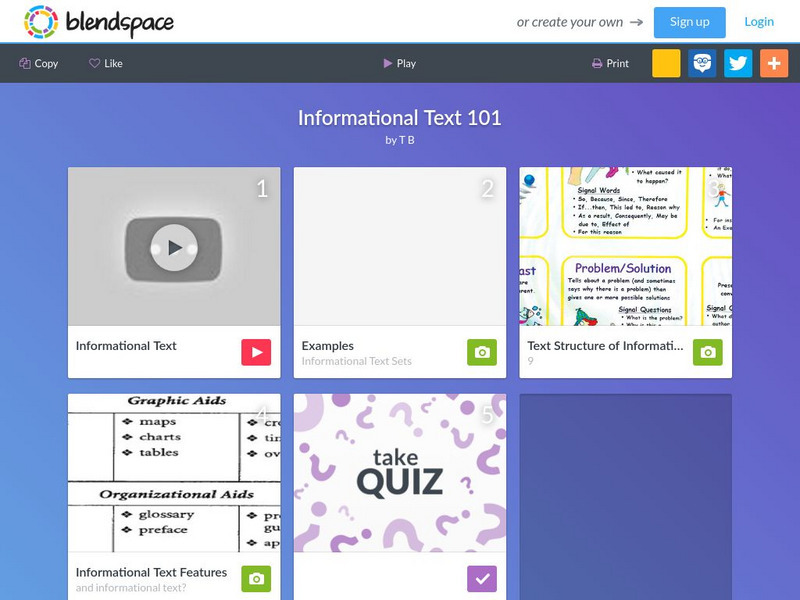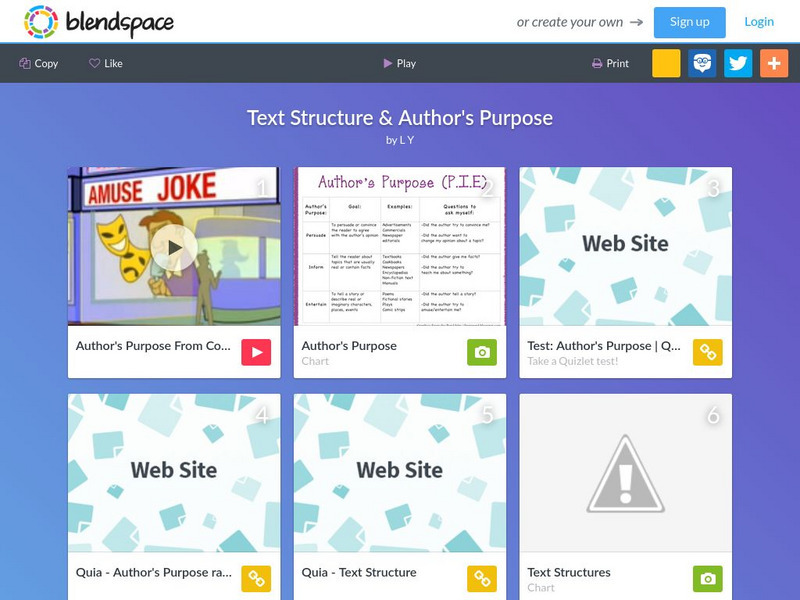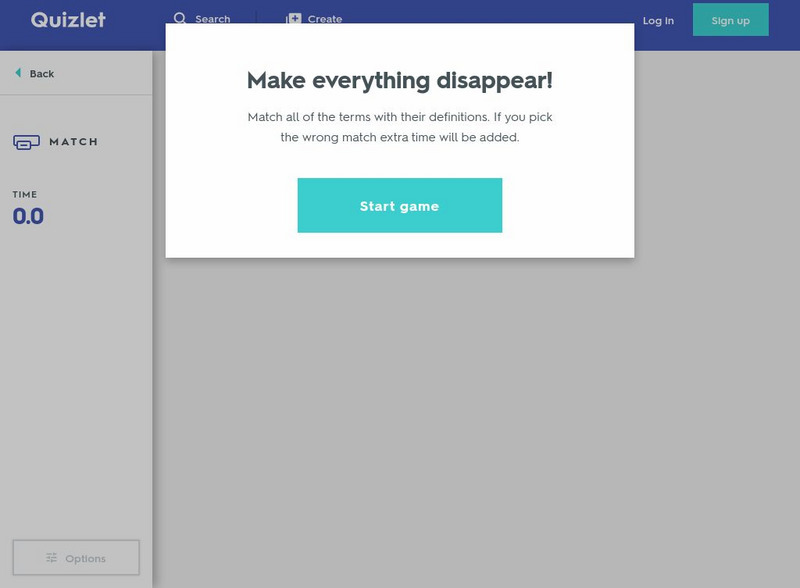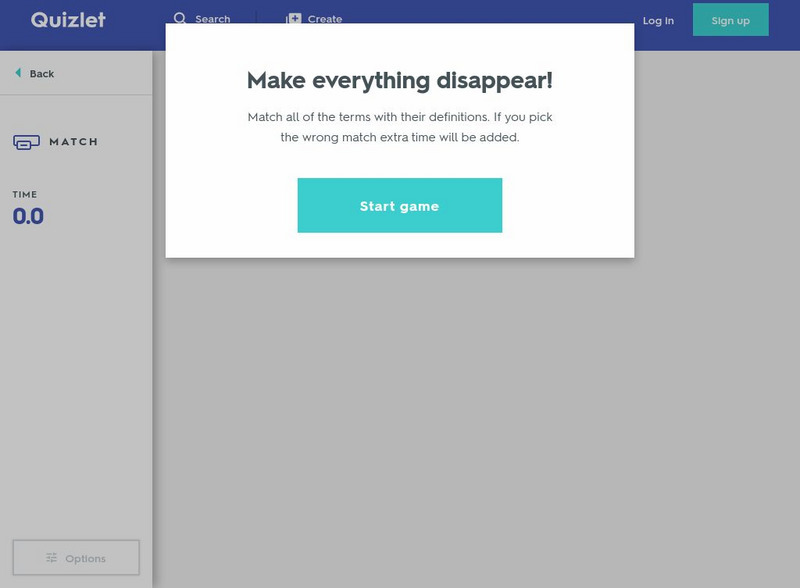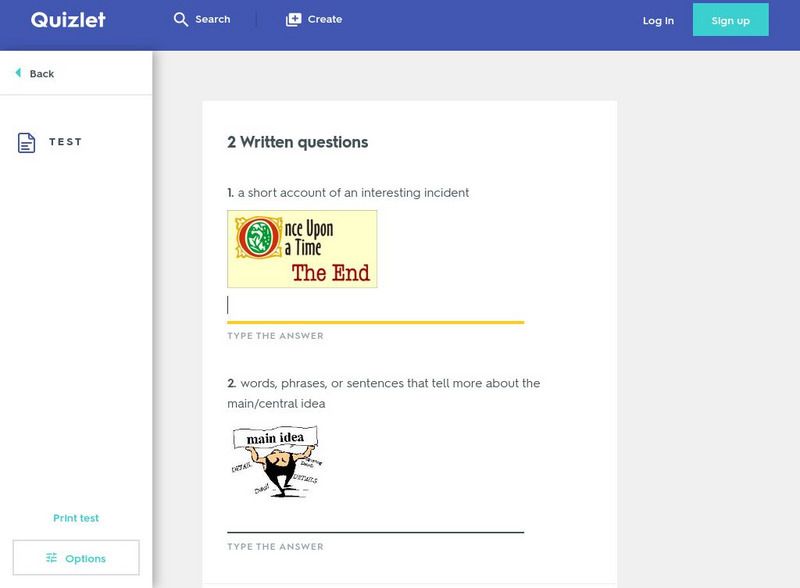Wisc-Online
Wisc Online: Identifying the Main Idea
This resource defines main ideas and is an interactive way to assess a student's ability to correctly find main ideas from paragraphs.
TES Global
Blendspace: Text Structures
A thirty-part learning module on text structures including description, sequence, problem and solution, compare and contrast, and cause and effect. Lessons include links to pictures, story text, informational text, videos, charts,...
TES Global
Blendspace: Reading Strategies for Complex Texts
A nine-part learning module on reading strategies including links to videos, images, websites, and activities.
TES Global
Blendspace: Informational Text 101
A five-part learning module on informational text including links to a video, images, and an assessment.
TES Global
Blendspace: Text Structure & Author's Purpose
A ten-part learning module with links to videos, images, and websites to use while learning about text structure and author's purpose.
TES Global
Blendspace: Informational Text
A twelve-part learning module with links to images, texts, slides, and charts that teach skills to build reading comprehension with informational texts.
TES Global
Blendspace: What Is the Main Idea and Supporting Details?
A learning module with thirty links to texts, slide shows, videos, and images that teach about finding the main idea and supporting details in a written passage.
Scholastic
Scholastic: Nonfiction Comprehension: Making Personal and Textual Connections
This is a lesson plan to help elementary learners connect to nonfiction text as they read.
ClassFlow
Class Flow: Topic & Main Idea
[Free Registration/Login Required] Recognizing the main idea is the key to good comprehension. The main idea is a general idea under which fits all the supporting material of the passage or paragraph. Learn and use three strategies that...
Other
Landmark School Outreach: Finding the Main Idea
This reading strategy resource provides steps for identifying the main idea of an informational text. Example informational text paragraphs are provided, along with detailed explanations for the processes used in identifying the main...
Tom Richey
Slide Share: Distinguishing Main Ideas and Supporting Details
This downloadable slideshow focuses on main ideas and supporting details including definitions, identification, and practicing with paragraphs. RI.9-10.2 central idea/summary
Can Teach
Can Teach: Introduction to Character Traits
In this lesson plan students will better understand what and how to generate the traits of a character. Lesson plan indicated for 4th grade and above.
Can Teach
Can Teach: Different Perspectives a Graphic Organizer
For this lesson plan learners will read a text from a number of different perspectives which will result in a greater understanding of it. This is a good strategy to use to guide students through multiple readings of a text. Lesson plan...
Other
Live binders.com: Reader and Task Considerations
Reader and task considerations including Cognitive Capabilities, Reading Skills, Motivation and Engagement with Task and Text, Prior Knowledge and Experience, Content and/or Theme Concerns, Complexity of Associated Tasks.
Other
Mantex: Tutorials: What Is Close Reading?
This site discusses the four types of reading: Linguistic, Semantic, Structural, and Cultural and offers a detailed example of close reading. RL.11-12.3 Auth choice story elem, RL.11-12.5 Choice of Text Structure
Quia
Quia: Reading: Finding the Main Idea
Students read forty short texts and choose the main idea of each text. Correct answers are provided for any missed, and the score is tallied along the way.
Quizlet
Quizlet: Making Inferences (Nonfiction)
Match five words and definitions about making inferences in nonfiction texts by racing against the clock in this learning game.
Quizlet
Quizlet: Making Inferences (Nonfiction)
Build your nonfiction inference vocabulary by interacting with terms like lesson, data, schema, sources, and more. Choose to view flashcards, complete learning and spelling exercises, take a test, or play a matching or gravity game.
Quizlet
Quizlet: Text Structure (7Th Grade) Test
Answer five multiple choice questions defining different text structures including description, problem/solution, compare and contrast, cause and effect, and sequence.
Quizlet
Quizlet: Text Structure (7Th Grade) Learn
Type the term matching the definitions of five different text structures including description, problem/solution, compare and contrast, cause and effect, and sequence.
Quizlet
Quizlet: Types of Supporting Details: Definitions: Match
In this interactive game, student match terms describing types of supporting details to their definitions.
Quizlet
Quizlet: Types of Supporting Details: Definitions: Learn
This interactive helps students learn the types of supporting details by having them type in the terms that fit the definitions.
Quizlet
Quizlet: Types of Supporting Details: Definitions: Flashcards
This interactive set of flashcards focuses on the definitions for types of supporting details such as statements of fact, expert testimony, first-hand accounts, personal experiences, statistics, analogies, etc.
Quizlet
Quizlet: Types of Details: Test
This interactive quiz features six multiple-choice questions about types of details and their definitions.




